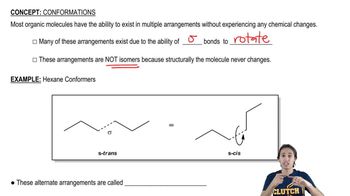Draw the two chair conformations of each compound, and label the substituents as axial and equatorial. In each case, determine which conformation is more stable.
e. cis-1-ethyl-4-methylcyclohexane
f. trans-1-ethyl-4-methylcyclohexane
 Verified step by step guidance
Verified step by step guidance Verified video answer for a similar problem:
Verified video answer for a similar problem:



 4:02m
4:02mMaster Equatorial Preference with a bite sized video explanation from Johnny
Start learning